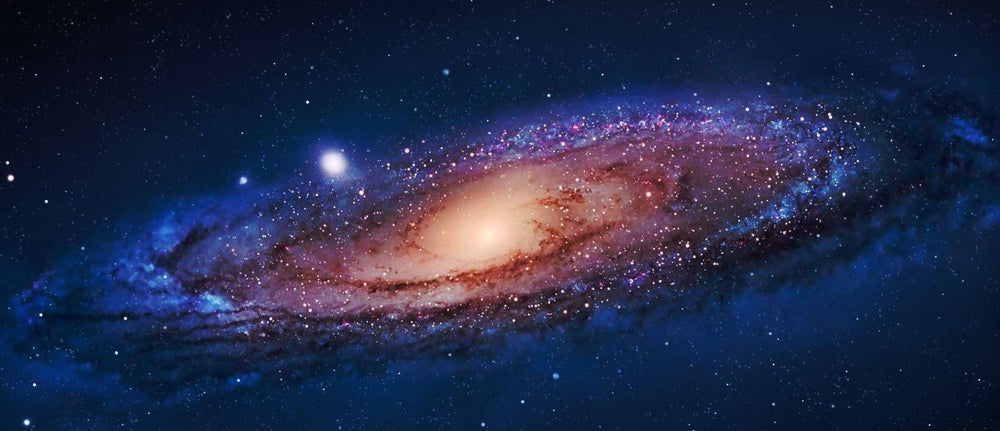M31 - The Andromeda Galaxy
The Andromeda Galaxy, also known as M31, is a beautiful spiral galaxy that lies approximately 2.5 million light-years away from our Milky Way Galaxy. It is one of the closest galaxies to ours, and it is visible to the naked eye in the night sky. In this blog post, we will explore everything you need to know about the Andromeda Galaxy, from its history, characteristics, and its importance in the field of astronomy.
The cosmos, an endless expanse of wonder, harbors celestial bodies that captivate our imaginations and challenge our understanding of the universe. Among these cosmic wonders, the Andromeda Galaxy stands out as a luminous jewel in the tapestry of the night sky. In this comprehensive exploration, we will unravel the secrets of the Andromeda Galaxy, delving into its intriguing facts, types, age, size, diameter, mass, temperature, and color.
The Andromeda Galaxy: An Overview
The Andromeda Galaxy, also known as Messier 31, M31, or NGC 224, is a spiral galaxy located approximately 2.5 million light-years from Earth. As the nearest spiral galaxy to our own Milky Way, Andromeda has long captured the attention of astronomers and stargazers alike. Its breathtaking appearance in the night sky has earned it the nickname "Andromeda Nebula."
Andromeda Galaxy Type
Galaxies come in various shapes and sizes, with the three primary types being spiral, elliptical, and irregular. The Andromeda Galaxy belongs to the spiral galaxy class, characterized by its distinct arms spiraling out from a central core. This classification suggests a dynamic structure, with ongoing star formation and a wealth of cosmic activity.
Andromeda Galaxy Age
Estimating the age of a galaxy is a complex task, but astronomers have determined that the Andromeda Galaxy is roughly 10 billion years old. This places it in the same cosmic era as our Milky Way, indicating a shared timeline of galactic evolution.
Andromeda Galaxy Size and Diameter
Andromeda is a colossal cosmic entity, boasting an impressive diameter of about 220,000 light-years. To put this into perspective, it is more than twice the size of the Milky Way. This vast expanse houses billions of stars, planetary systems, and other celestial phenomena that contribute to the galaxy's breathtaking appearance.
Andromeda Galaxy Mass
The Andromeda Galaxy is a heavyweight in the cosmic arena, with a mass approximately 1.5 times that of the Milky Way. This substantial mass is a key factor in understanding the gravitational dynamics between Andromeda and our own galaxy, hinting at a future cosmic collision.
Andromeda Galaxy Temperature
Determining the temperature of a galaxy involves studying the radiation emitted by its stars and other celestial objects. The Andromeda Galaxy, like other galaxies, exhibits a wide range of temperatures, from the searing heat of massive, short-lived stars to the cooler glow of older, red giants. This temperature diversity contributes to the galaxy's vibrant and dynamic nature.
Andromeda Galaxy Color
The color of a galaxy provides valuable insights into its composition and the types of stars within it. Andromeda's color palette ranges from blue, signifying the presence of hot, young stars, to red, indicating older and cooler stars. The interplay of these colors creates a mesmerizing celestial tapestry that graces our night sky.
Andromeda Galaxy Facts
-
Proximity to Earth:
- The Andromeda Galaxy is the closest spiral galaxy to our Milky Way.
- Situated at a distance of approximately 2.5 million light-years, it dominates our night sky as a celestial masterpiece.
-
Galactic Classification:
- Andromeda is classified as a spiral galaxy, featuring prominent arms spiraling out from a central core.
- This classification suggests ongoing star formation and dynamic cosmic activity within its vast expanse.
-
Age of Andromeda:
- Scientists estimate that the Andromeda Galaxy is around 10 billion years old.
- Its age places it within the same cosmic era as our own Milky Way, offering insights into the shared evolution of galactic structures.
-
Impressive Size and Diameter:
- With a colossal diameter of about 220,000 light-years, Andromeda is more than twice the size of the Milky Way.
- Its immense size houses billions of stars, planetary systems, and cosmic phenomena, contributing to its breathtaking appearance.
-
Galactic Mass:
- The Andromeda Galaxy is a cosmic heavyweight, boasting a mass approximately 1.5 times that of our Milky Way.
- This substantial mass plays a crucial role in understanding gravitational interactions and the future collision with our galaxy.
-
Temperature Variations:
- Andromeda exhibits a diverse temperature range, from the searing heat of massive, young stars to the cooler glow of older, red giants.
- This temperature diversity contributes to the galaxy's vibrant and dynamic cosmic landscape.
-
Color Palette of Andromeda:
- The galaxy's color palette ranges from blue, indicating hot, young stars, to red, signifying older and cooler stellar bodies.
- The interplay of these colors creates a captivating celestial canvas that graces our night sky.
-
Andromeda-Milky Way Collision:
- Andromeda is on a collision course with our Milky Way, with the cosmic merger expected in about 4 billion years.
- This collision, rather than a violent event, will lead to the formation of a new, larger galaxy through gravitational interactions.
Andromeda Galaxy History
The Andromeda Galaxy was first discovered by the Persian astronomer Abd al-Rahman al-Sufi in the year 964 AD. However, it was not until the 20th century that its true nature as a galaxy was understood. In 1923, the astronomer Edwin Hubble discovered that the Andromeda Galaxy was not a nebula, as previously thought, but a separate galaxy. This discovery revolutionized our understanding of the universe and the vastness of space.
Characteristics
The Andromeda Galaxy is a spiral galaxy, similar in shape to our Milky Way Galaxy. It is about 220,000 light-years in diameter, making it the largest galaxy in our Local Group of galaxies, which also includes the Milky Way, the Triangulum Galaxy, and several smaller galaxies. The Andromeda Galaxy has a central bulge surrounded by a disk, which contains two prominent spiral arms. It also has a dense bar-like structure in its center, which is thought to be a site of intense star formation.
The Andromeda Galaxy is also home to more than a trillion stars, which is more than twice the number of stars in our Milky Way Galaxy. It has a bright nucleus, which is thought to contain a supermassive black hole, with a mass estimated to be around 100 million times that of our sun.
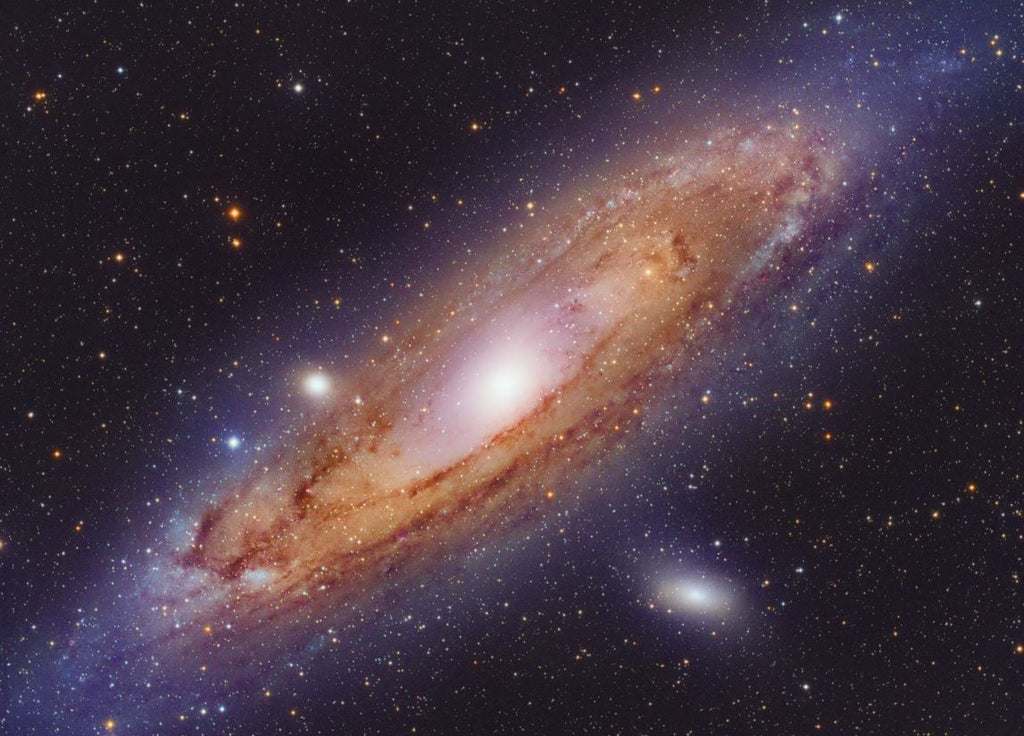
How Far Away is the Andromeda Galaxy from Earth?
The Andromeda Galaxy is located approximately 2.5 million light-years away from Earth. To put that in perspective, light travels at a speed of approximately 186,000 miles per second, meaning it takes light 2.5 million years to reach us from the Andromeda Galaxy.
How to Find the Andromeda Galaxy
The Andromeda Galaxy is visible to the naked eye in dark sky conditions, appearing as a fuzzy patch of light. However, to see it in all its glory, you'll need a pair of binoculars or a telescope. To find the galaxy, look towards the northeast in the autumn and winter months in the Northern Hemisphere. You can also use a star chart or a smartphone app to help you locate it.

Is There Life in the Andromeda Galaxy?
The possibility of life in the Andromeda Galaxy is a topic of much debate and speculation. While we have not yet detected any signs of life within the galaxy, it is certainly possible that life could exist on some of the billions of planets within its vast expanse. However, the distance between our two galaxies makes communication or travel between them currently impossible.
Stars in the Andromeda Galaxy
The Andromeda Galaxy is estimated to contain over 1 trillion stars, making it one of the most populous galaxies in the universe. The stars in the Andromeda Galaxy are composed mainly of hydrogen and helium, with small amounts of heavier elements.
How Many Planets are in the Andromeda Galaxy?
The exact number of planets in the Andromeda Galaxy is unknown, but it is estimated that there could be billions of planets within the galaxy. As we continue to explore and study the Andromeda Galaxy, we are sure to discover even more about the planets within its vast expanse.

Andromeda Galaxy
| Feature | Description |
|---|---|
| Type | Spiral galaxy |
| Distance from Earth | 2.5 million light-years |
| Diameter | Approximately 220,000 light-years |
| Number of Stars | Over 1 trillion |
| Planets | Estimated to contain billions of planets |
| Collision with Milky Way | Predicted to occur in approximately 4.5 billion years |
| Visible with Naked Eye | Yes, in dark sky conditions |
Importance in Astronomy
The Andromeda Galaxy is an important object of study for astronomers, not only because it is the closest large galaxy to our own, but also because it offers a unique opportunity to study the formation and evolution of galaxies. By studying the Andromeda Galaxy, astronomers hope to understand how galaxies form, evolve, and interact with each other.
The Andromeda Galaxy is also important in the study of dark matter. Astronomers have observed that the galaxy's rotation curve does not match the expected behavior based on the visible mass alone. This suggests the presence of dark matter, a mysterious substance that makes up most of the mass in the universe but cannot be directly observed.
In addition, the Andromeda Galaxy is a popular target for amateur astronomers and astrophotographers. Its brightness and size make it an easy object to observe, even with small telescopes. Many professional observatories have also studied the Andromeda Galaxy in detail, using instruments that can detect light at various wavelengths, from radio waves to X-rays.
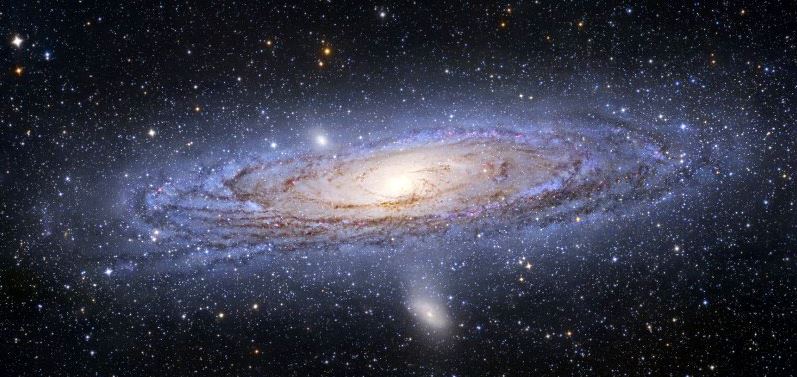
Current Understanding of Andromeda Galaxy
Today, astronomers have a much better understanding of the Andromeda Galaxy than they did just a few decades ago. For example, using the Hubble Space Telescope, astronomers have been able to map the Andromeda Galaxy in great detail, revealing its structure and composition. They have also used ground-based telescopes to study the galaxy's rotation and velocity, helping them to better understand its dynamics.
One of the most exciting recent discoveries related to the Andromeda Galaxy has been the detection of a stream of stars that is believed to have been stripped from a smaller galaxy that collided with Andromeda in the past. This stream, known as the Giant Stellar Stream, is visible in deep images of the galaxy and provides important clues about its history and evolution.
Future Observations of Andromeda Galaxy
In the coming years, astronomers plan to study the Andromeda Galaxy even more closely, using both ground-based and space-based observatories. For example, James Webb Space Telescope, will be able to study the galaxy in infrared light, revealing details about its dust and gas content.
In addition, ground-based telescopes, such as the Thirty Meter Telescope (TMT), which is currently under construction in Hawaii, will be able to study the Andromeda Galaxy in even greater detail than before. The TMT will be able to directly image individual stars in the galaxy, providing a wealth of information about their properties and evolution.
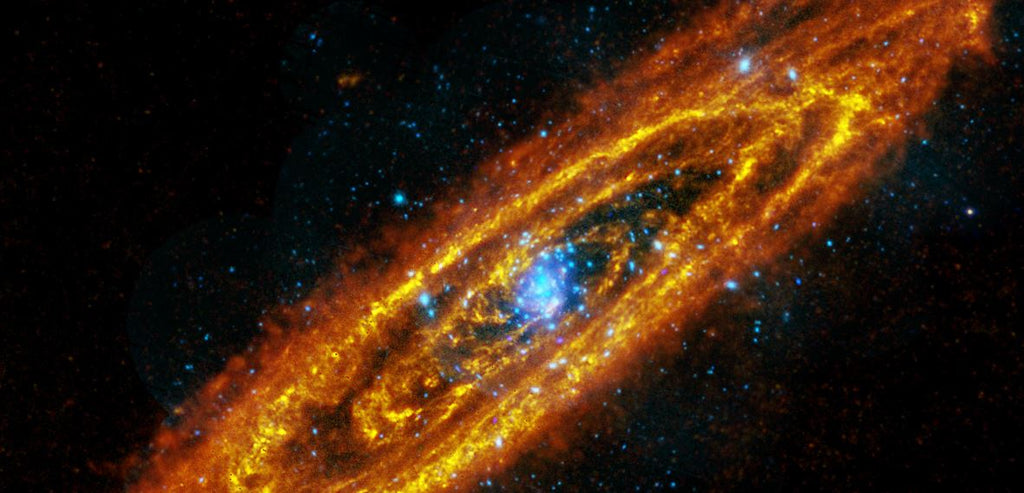
Andromeda Galaxy and the Fate of the Milky Way
The Andromeda Galaxy's proximity to the Milky Way makes it a key object in understanding the fate of our own galaxy. According to current models, the Milky Way and Andromeda are on a collision course and are expected to collide in about 4.5 billion years. This collision will reshape both galaxies, creating a massive elliptical galaxy. Studying the Andromeda Galaxy can help astronomers understand the conditions that will lead to this merger and the resulting galaxy.
Andromeda Galaxy Collision with Milky Way
Current models predict that the Andromeda Galaxy and the Milky Way will collide in approximately 4.5 billion years. While this may seem like a long time in human terms, it is a relatively short amount of time in the grand scheme of things. The collision is expected to create a new galaxy, with a new structure and composition.
Andromeda vs Milky Way
The Andromeda Galaxy and the Milky Way are the two largest members of the Local Group of galaxies, which also includes dozens of smaller galaxies. While they share some similarities, there are also some key differences between the two galaxies. The Andromeda Galaxy is approximately twice the size of the Milky Way and contains more stars, while the Milky Way has a more prominent central bulge.

Comparison Table Between: Andromeda vs Milky Way
| Feature | Andromeda Galaxy | Milky Way |
|---|---|---|
| Type | Spiral galaxy | Spiral galaxy |
| Distance from Earth | 2.5 million light-years | 100,000 light-years |
| Diameter | Approximately 220,000 light-years | Approximately 100,000 light-years |
| Number of Stars | Over 1 trillion | Approximately 100-400 billion |
| Planets | Estimated to contain billions of planets | Estimated to contain billions of planets |
| Collision with Milky Way | Predicted to occur in approximately 4.5 billion years | Predicted to occur in approximately 4.5 billion years |
| Visible with Naked Eye | Yes, in dark sky conditions | Yes, in dark sky conditions |
As you can see from the table, the Andromeda Galaxy and the Milky Way have some significant differences, including their distance from Earth, size, and number of stars. However, they share many similarities, such as their type of galaxy and the estimated number of planets they contain.
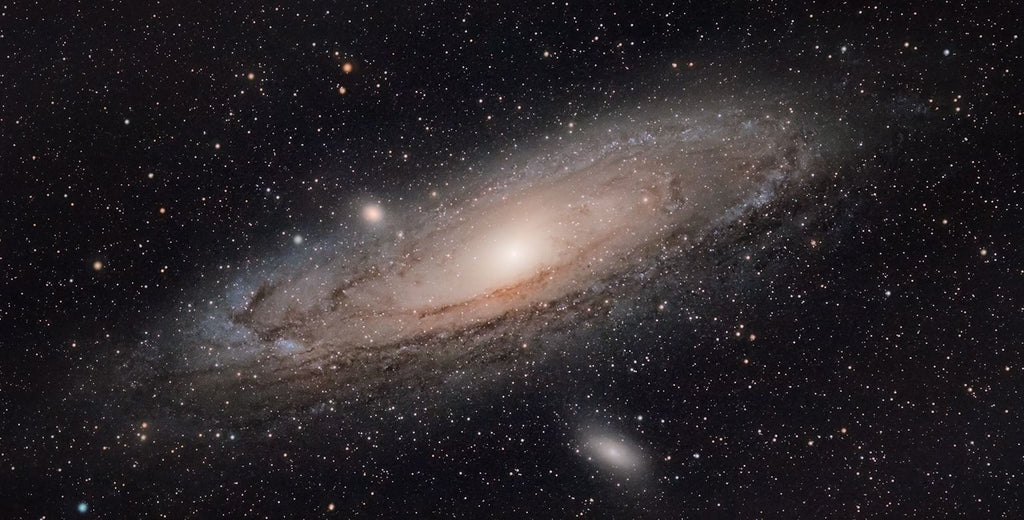
Exploring Andromeda Galaxy with Telescopes
Observing the Andromeda Galaxy is an exciting experience for amateur astronomers as well. The galaxy is visible to the naked eye from a dark sky location and can be observed with binoculars or a small telescope. The Andromeda Galaxy is located in the constellation Andromeda and can be found by locating the bright star, Alpheratz.
To observe the galaxy's structure and detail, larger telescopes are needed. With a larger aperture telescope, observers can see the bright central bulge, the two prominent spiral arms, and the surrounding disk. Observing the galaxy in different wavelengths of light, such as infrared and ultraviolet, can reveal details about the galaxy's dust and gas content, as well as the presence of star-forming regions.
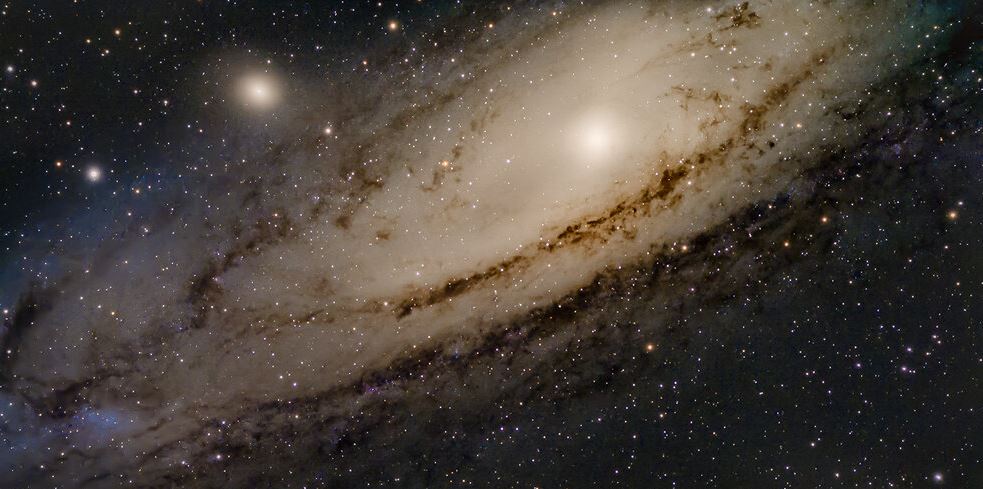
How to Photograph Andromeda Galaxy
If you want to capture a photograph of the Andromeda Galaxy, there are a few things you'll need to keep in mind. Here are some tips for getting a great shot:
- Location: Find a location away from light pollution. This will help reduce light interference and increase the visibility of the galaxy.
- Equipment: You'll need a camera with a manual mode and a tripod. A telephoto lens will also be necessary to zoom in on the galaxy.
- Settings: Set the camera to manual mode and adjust the aperture to the widest possible setting (lowest f-number) to let in as much light as possible. Set the ISO to a high value to increase the camera's sensitivity to light. The shutter speed will depend on your equipment and location, but a good starting point is 20-30 seconds.
- Focus: Use manual focus to ensure the galaxy is in focus. You can do this by zooming in on a bright star near the galaxy and adjusting the focus until the star is sharp.
- Composition: Experiment with different compositions and angles to find the best shot. You can include elements of the landscape or sky to add interest to the photo.
- Post-processing: Once you have captured the image, you can enhance it with post-processing software like Adobe Photoshop or Lightroom. Adjusting the contrast and color balance can bring out the detail in the galaxy.

FAQs about Andromeda Galaxy
1. How far away is the Andromeda Galaxy from us?
The Andromeda Galaxy is approximately 2.5 million light-years away from Earth.
2. How big is the Andromeda Galaxy?
The Andromeda Galaxy has a diameter of approximately 220,000 light-years, making it roughly twice the size of the Milky Way.
3. How many stars are in the Andromeda Galaxy?
The Andromeda Galaxy is estimated to contain over 1 trillion stars.
4. What is the Andromeda Galaxy made of?
The Andromeda Galaxy, like most galaxies, is primarily made up of dark matter, gas, and stars. Its stars are composed mainly of hydrogen and helium, with small amounts of heavier elements.
5. When will the Andromeda Galaxy collide with the Milky Way?
Current models predict that the Andromeda Galaxy and the Milky Way will collide in approximately 4.5 billion years.
6. Can the Andromeda Galaxy be seen with the naked eye?
Yes, the Andromeda Galaxy can be seen with the naked eye from a dark sky location.
7. What is the distance between the Milky Way and the Andromeda Galaxy?
The Milky Way and the Andromeda Galaxy are approximately 2.5 million light-years apart.
8. Is the Andromeda Galaxy the only galaxy visible to the naked eye?
No, there are several other galaxies that can be seen with the naked eye under dark sky conditions, including the Large and Small Magellanic Clouds and the Triangulum Galaxy.

Conclusion
The Andromeda Galaxy is a remarkable object that has fascinated astronomers for centuries. Its study has revolutionized our understanding of galaxies, dark matter, and the cosmos as a whole. As we continue to explore and learn more about this beautiful and mysterious galaxy, we are sure to uncover even more secrets and insights into the workings of the universe.
More Andromeda Galaxy:
- How Far is The Andromeda Galaxy From Earth
- How Many Stars Are in The Andromeda Galaxy
- Who Discovered The Andromeda Galaxy
- Andromeda Galaxy Distance To Earth
- When Was the Andromeda Galaxy discovered
- Andromeda Constellation
More Galaxies:
- Triangulum Galaxy
- Pinwheel Galaxy
- Whirlpool Galaxy
- Black Eye Galaxy
- Sunflower Galaxy
- Bodes Galaxy
- Sombrero Galaxy
- Tadpole Galaxy
- NGC 1300
- Canis Major Dwarf Galaxy
- Cigar Galaxy
- NGC 1232
- Cartwheel Galaxy
- NGC 1365
- NGC 3627
- Sculptor Galaxy
- NGC 4631
- NGC 7318
- NGC 6946
- NGC 5248
- NGC 4449
- NGC 1097
- Antennae Galaxies
- Leo Triplet
- NGC 6744

